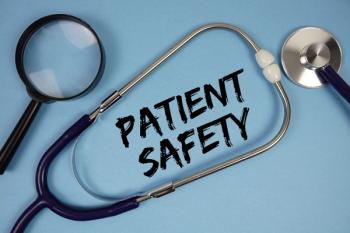
Ambulatory Care Pharmacists to Decrease PCP Workload, Increase Patient Access | ASHP Midyear
Experts conducted a study to better understand how ambulatory care pharmacist services impacted patient outcomes, provider workload, and access to care.
From collaboration between various providers in an ambulatory care setting, pharmacists can take a significant workload burden away from primary care providers (PCPs) while simultaneously increasing patient access to care and other necessary medical services.
“Ambulatory care pharmacists provide clinical services as members of population health (PH) and direct patient care (DPC) teams. The value of pharmacists’ services in these 2 common practice models is typically assessed by the achievement of patients’ clinical outcomes, financial savings, and patient satisfaction,” wrote authors of a poster presented at the American Society of Health-System Pharmacists 2024 Midyear Clinical Meeting and Exhibition, held December 8 to 12 in New Orleans, Louisiana.1
To further understand the value of an ambulatory care team—and the role of pharmacists within that team—researchers observed how each team’s operations impacted patient access to care and PCP workload burden. While access to care and workforce burnout continue to plague the health care industry, researchers hoped to use their successful findings to inform further collaborative approaches to providing care.
READ MORE:
Indeed, according to the Health Resources & Services Administration, primary care physicians will reach a total shortage of over 87,000 full-time equivalent providers. Furthermore, over half of all primary care physicians included in the report (279,194) said that they felt burned out in 2022. Although the report focused on a year impacted by unprecedented events such as the COVID-19 pandemic, PCP burnout is a real issue that experts believe can be fixed by a more collaborative approach.2
“This study was conducted at a federally-qualified health center with a PH team pharmacist who served 14 statewide practices and 200 PCPs, and an academic-affiliated physician organization with a pharmacist who provided DPC services at 3 physician practices with 25 PCPs,” they wrote.1
Comparing the DPC and PH practice models, researchers attempted to better understand the full extent of ambulatory care pharmacists’ role in improving care, access, and workforce burnout. In providing contrast between these 2 models, researchers were able to highlight where exactly pharmacists stood out in the process.
“The [PH] model dynamically simulates individuals’ disease states, risk factors, and health determinants in order to describe and project health outcomes, including disease incidence, prevalence, life expectancy, health-adjusted life expectancy, quality of life, and health care costs,” according to authors of a study published in Population Health Metrics.3
The DPC model, however, is not based on specific fee-for-service assistance from PCPs. Rather, DPC has more of what experts would call a longitudinal approach to care, where family physicians are typically common and they help their patients over a longer period of time.4 With the DPC model being more common in frequent visitors to various health care destinations, its PH counterpart focuses on real-world data to inform one-time PCP decisions.
“For both pharmacist practice models, we calculated: pharmacist workload capacity as the number of patients receiving medication reviews or pharmacist-patient visits annually; PCP time saved or required for the implementation of the pharmacist recommendations; and additional PCP appointments opened up to improve patient access,” they continued.1
Starting with pharmacists’ workloads, the PH model allowed pharmacists to conduct 1664 more comprehensive medication reviews per year, compared with pharmacists from the DPC team. As previously mentioned, the key factor allowing the PH model to complete more reviews is the DPC model’s longitudinal approach.
Moving to PCP workload burden, the PH model required an increase of 384 hours per year for PCPs, mainly due to the PCP having to review all pharmacist recommendations. The DPC model, however, was able to reduce the PCP workload by 640 hours per year because of collaborative practice agreements (CPAs) that don’t require PCP approval.
Finally, the DPC model was also successful in opening up 1920 PCP appointments each year for patients in need of immediate care or consultation. “Given the shortage of primary care physicians and long patient wait times to get a PCP appointment, it is important to recognize that pharmacists can provide medication management services in ambulatory care settings,” continued the authors.1
While each ambulatory care model has its advantages and disadvantages, experts agree that pharmacists can step up to both provide greater access to care and relieve the burdens of thousands of PCPs. With more and more collaborative practice settings proving to be beneficial for various populations, researchers believe these models are crucial for making patient care accessible.
“When using a PH practice model, additional PCP workload is required to review and implement the pharmacists’ recommendations. In contrast, expanding ambulatory/primary care teams with pharmacists using a DPC model and CPAs can reduce PCP clinical workload burden. Also, patient access can be improved by opening up PCP appointments as a result of shifting,” concluded authors of the study.1
READ MORE:
Follow along with our coverage of the
References
1. Smith M, Mulrooney M. A comparison of ambulatory care pharmacist practice models on patient access and primary care provider (PCP) workload burden. Presented at: American Society of Health-System Pharmacists 2024 Midyear Clinical Meeting and Exhibition; December 8-12, 2024; New Orleans, LA. Poster 8-007.
2. State of the primary care workforce, 2024. Health Resources & Services Administration. November 2024. Accessed December 16, 2024. https://bhw.hrsa.gov/sites/default/files/bureau-health-workforce/state-of-the-primary-care-workforce-report-2024.pdf
3. Hennessy DA, Flanagan WM, Tanuseputro P, et al. The Population Health Model (POHEM): An overview of rationale, methods and applications. Popul Health Metrics. 13, 24 (2015). https://doi.org/10.1186/s12963-015-0057-x
4. Direct primary care. American Academy of Family Physicians. 2024. Accessed December 16, 2024. https://www.aafp.org/family-physician/practice-and-career/delivery-payment-models/direct-primary-care.html
Newsletter
Pharmacy practice is always changing. Stay ahead of the curve with the Drug Topics newsletter and get the latest drug information, industry trends, and patient care tips.













































































































































